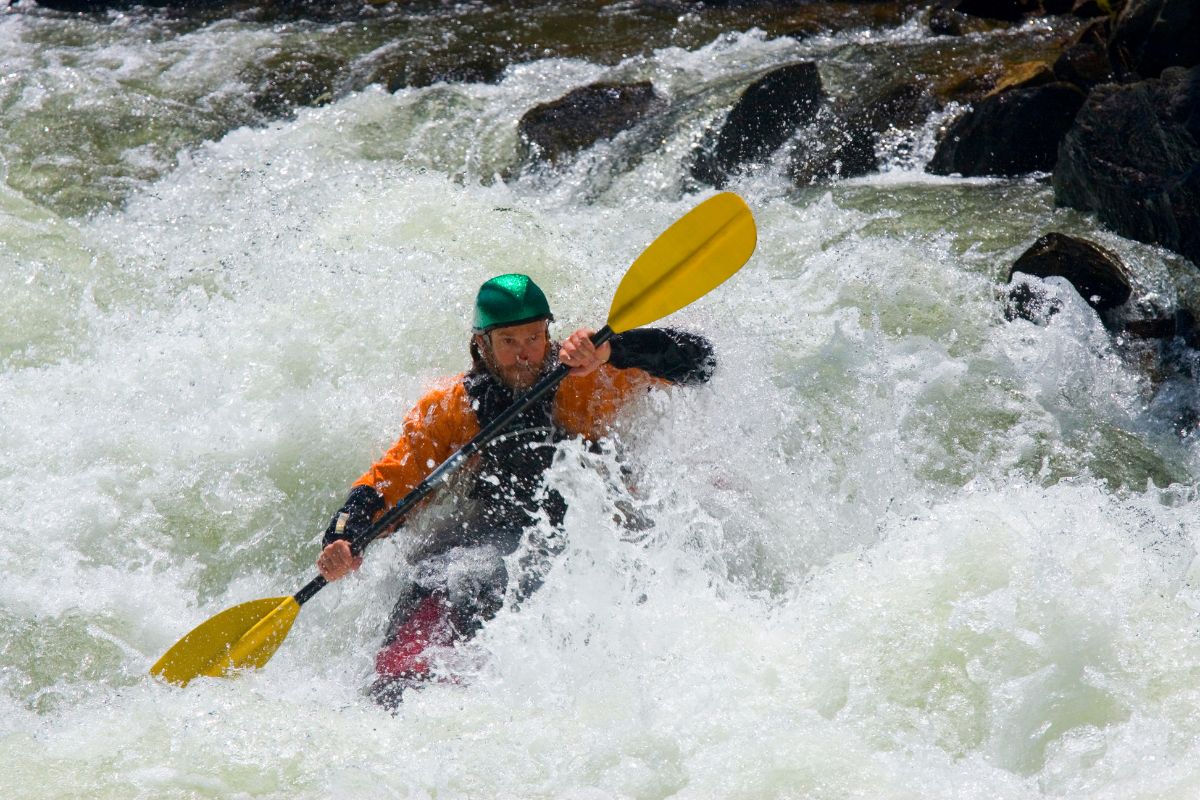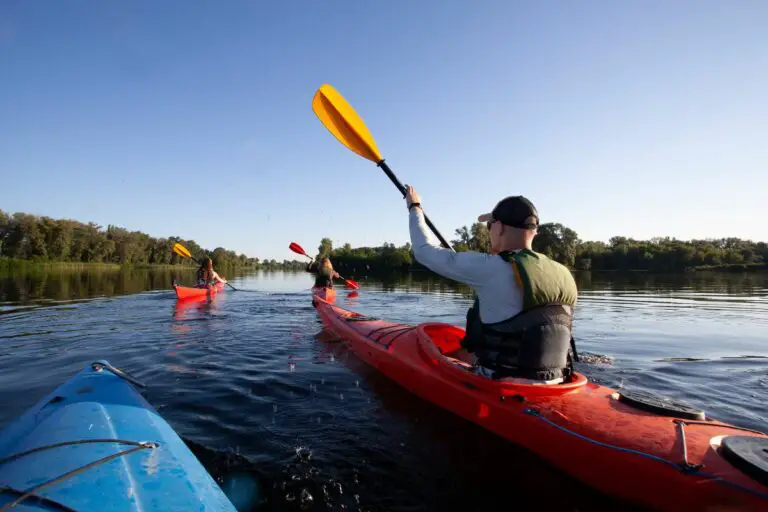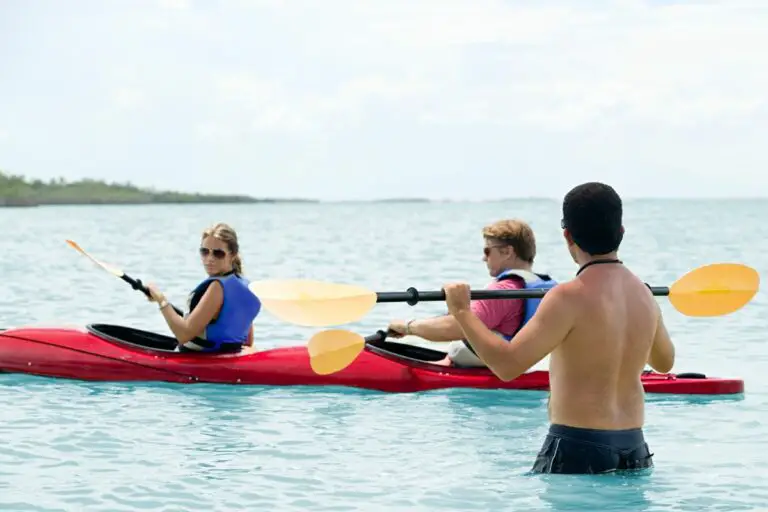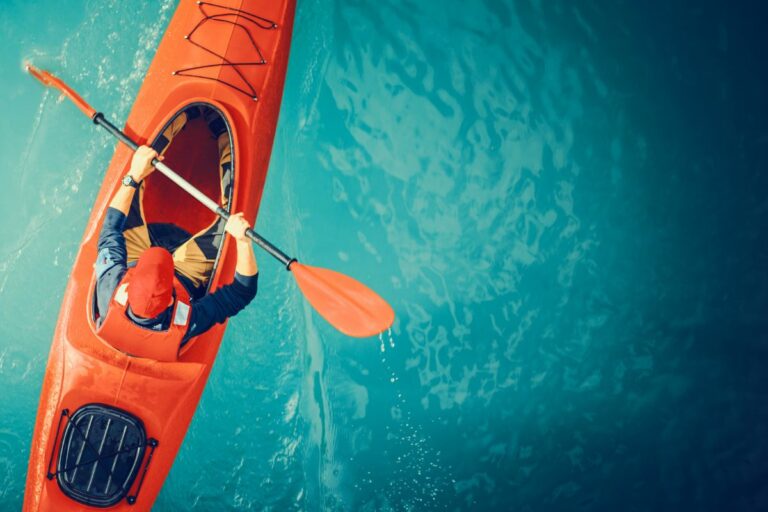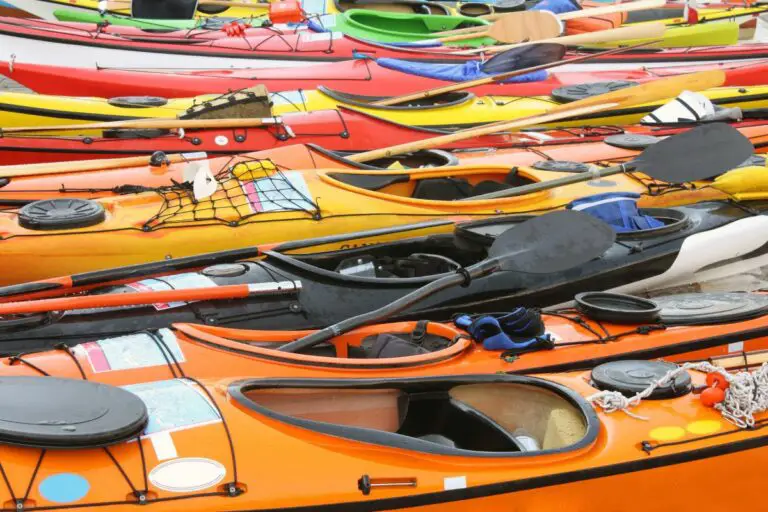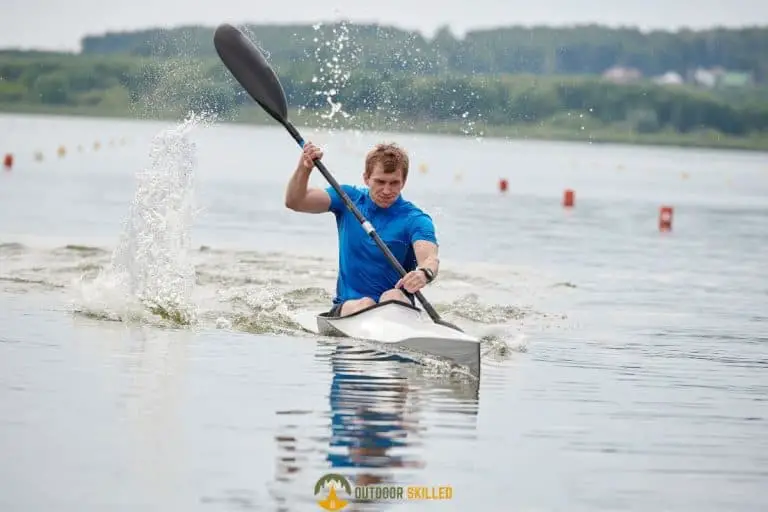What Could Go Wrong Kayaking? 13 Kayaking Risks Explained
Kayaking is a popular water sport that is often associated with relaxation and tranquility. There is something inherently peaceful about gliding across the water in a small boat, taking in the sights and sounds of nature.
However, it’s important to remember that kayaking can also be dangerous, with the potential for serious accidents and injuries.
Whether you are a beginner or an experienced kayaker, many things can go wrong while out on the water. So, what could go wrong kayaking?
Things that could go wrong while kayaking include:
- Safety Gear Failure
- Kayak or Paddle Damage
- Capsizing
- Sudden Weather Changes
- Strong Water Currents
- Hypothermia
- Physical Injuries
- Sunburns and Heatstrokes
- Exhaustion and Dehydration
- Collision with Other Vessels
- Wildlife Attacks
- Getting Lost
- Drowning
Keep reading to learn more about the risks of kayaking and how to avoid them to make your kayaking experience safer and more enjoyable.
Table of Contents
How Dangerous Is Kayaking?

Even though kayaking is often considered a leisurely activity, it can be dangerous, especially if proper safety precautions are not taken.
The level of danger depends on a number of factors, including the skill level of the kayaker, the conditions of the water, and the type of kayak and equipment used.
Compared to some other water sports, such as whitewater rafting or surfing, kayaking may be considered safer, as it can be done on calmer waters with less risk of injury. However, it’s important to remember that all water sports involve some level of risk, and proper safety measures should always be taken regardless of how skilled you are.
What Could Go Wrong Kayaking?
Like any other water sport, there is always a risk that something could go wrong while kayaking. Even if you’re an experienced kayaker, you may still come across some unexpected challenges that could put you in danger.
It’s important to be aware of all the risks associated with kayaking and take appropriate safety measures to minimize the likelihood of accidents or injuries and make your overall experience more enjoyable.
So, let’s take a closer look at the most common kayaking risks and how to avoid them.
13 Kayaking Risks & How to Avoid Them
1. Safety Gear Failure
Safety gear failure, especially personal flotation device (PFD) failure, can be dangerous while kayaking because it increases the risk of injury or drowning. For instance, if a PFD fails to provide adequate flotation, a kayaker can quickly become exhausted and potentially drown.
So, here are some tips to avoid safety gear failure:
- PFDs can become damaged over time due to exposure to sunlight, water, and other environmental factors. So, before hitting the water, inspect your PFD to ensure it fits properly and has no signs of damage.
- Invest in high-quality safety gear from a reputable manufacturer that meets the necessary safety standards to ensure it will function correctly in an emergency.
- Ensure you wear your PFD correctly, with all straps tightened and secured. If a PFD is too loose or tight, it may not function correctly in an emergency.
- Practice using your safety gear before heading out on the water to ensure you know how to use it properly in an emergency.
- If your safety gear becomes damaged, replace it immediately. Do not risk using gear that may not function correctly in an emergency.
2. Kayak or Paddle Damage
Kayaking with a damaged kayak or paddle can pose a risk to your safety, so inspect them for any signs of damage or wear and tear before heading out on the water to ensure they’re in good condition.
While kayaking, try to avoid any obstacles that might damage your kayak or paddle, such as rocks or logs. When not in use, store your kayak and paddle in a dry, secure, secure location to prevent damage from exposure to the elements.
3. Capsizing
Capsizing is a common risk associated with kayaking. It occurs when the kayak overturns due to improper weight distribution, sudden movements, or rough water conditions, causing the kayaker to be ejected into the water.
To avoid capsizing, you need to stay alert and pay attention to the water conditions, keep your weight centered and evenly distributed in the kayak, avoid exceeding the kayak’s weight capacity, and avoid making any sudden movements.
If you do capsize, the first thing you need to do is keep your calm and stay close to your kayak. Next, you need to assess your situation to determine whether you can easily get back into the kayak, swim to the nearest shore, or wait for help.
Having a plan for capsizing and learning some self-rescue techniques is a good idea. It’s also a good idea to have a whistle or other signaling device, so you can use it to attract the attention of other boaters or rescue personnel.
Check out the following videos to learn how to get back into your kayak quickly and easily:
4. Sudden Weather Changes
Sudden weather changes, such as strong winds, lightning, or heavy rain, can make paddling and navigating your kayak difficult. So, check the weather forecast for the area before you embark on a kayaking trip.
Also, pack appropriate clothing and gear for the expected weather conditions, including rain gear, warm layers, and sun protection.
If you encounter sudden weather changes while kayaking, try to find shelter if possible. You can pull your kayak onto shore, seek refuge under a bridge or overhang, or find a protected cove or bay.
5. Strong Water Currents
Kayaking in strong currents is highly risky as they can cause your kayak to capsize, become trapped, or be pulled downstream.
So, make sure to check the water conditions before you head out on your kayaking trip, avoid kayaking in areas with high water flow rates, and keep an eye out for changes in the water current, such as swirling or choppy water.
It’s also important to learn proper paddling techniques to be able to maintain your balance and navigate your kayak in any conditions.
6. Hypothermia
Hypothermia is a significant risk for kayakers, especially during colder months. It occurs when the body loses heat faster than it can produce, leading to various symptoms, such as shivering, confusion, and fatigue, and can be life-threatening if left untreated.
To avoid the risk of hypothermia while kayaking, you need to wear weather-appropriate clothing, try to stay as dry as possible, and drink hydrating fluids to help regulate your body temperature.
7. Physical Injuries
There is a high risk of physical injury while kayaking, especially if proper safety measures are not followed. For instance, you might fall out of the kayak, hit an obstacle, or suffer muscle strain, making it difficult to stay afloat or paddle back safely to shore.
So, to avoid the risk of physical injury while kayaking, you need to wear your safety gear, including a properly fitted PFD, helmet, and protective footwear, learn proper kayaking techniques, and keep an eye out for any obstacle in the water.
You also need to listen to your body and know your limits. Don’t try to kayak in severe water conditions or hazardous locations beyond your skill level.
8. Sunburns and Heatstrokes
Sunburn and heatstrokes are significant risks for kayakers due to prolonged exposure to the sun and heat while on the water. They can cause dehydration, fatigue, dizziness, and even long-term skin damage.
To avoid the risks of prolonged sun exposure, you need to wear protective clothing, apply sunscreen with at least SPF 30 or higher, bring plenty of water to stay hydrated, and take regular breaks in the shade.
You may also want to consider kayaking early in the morning or late in the afternoon when temperatures are cooler.
9. Exhaustion and Dehydration
Exhaustion and dehydration can impair your judgment, reaction time, and decision-making abilities, making it dangerous to continue kayaking.
- To avoid getting exhausted and dehydrated while kayaking, you need to:
- Eat a balanced meal before your trip and bring healthy snacks to eat while on the water to maintain your energy levels.
- Bring plenty of water to drink and sip regularly throughout your trip, even if you don’t feel thirsty.
- Maintain a steady pace throughout the trip and take breaks as needed.
10. Collision with Other Vessels
Collisions with other vessels can be a risk for kayakers, as kayaks can be difficult for larger boats to see and avoid.
So, to minimize the risk of collision, you should stay in the designated kayak or non-motorized boating areas.
If you’re kayaking in a heavy-traffic area, make sure to always be aware of your surroundings and learn the correct hand signals to communicate with other boats. You can also increase your visibility by wearing brightly colored clothing or using reflective tape.
11. Wildlife Attacks
Wildlife attacks can be a risk for kayakers, especially in areas with potentially dangerous predators such as sharks.
To minimize the risk of getting attacked, research the area you’ll be kayaking in and the types of wildlife known to inhabit it. If you do encounter wildlife, try to keep a safe distance and avoid doing anything that might provoke the animals, such as feeding them, touching them, or approaching their offspring.
12. Getting Lost
Regardless of your skill level or your familiarity with your route, there’s still a chance that you may get lost or thrown off course while kayaking with no way of finding your way back to shore.
Getting lost can lead to a range of risks, such as dehydration, exhaustion, hypothermia, or even wildlife encounters. Additionally, it can make it difficult for rescuers to locate you if you need help.
To minimize the risk of getting lost while kayaking, it is important to plan your route carefully and stick to well-traveled or popular waterways, where there are more likely to be other kayakers or boats that can help you.
It is also important to carry navigational tools such as maps, compasses, or GPS devices, as well as emergency gear, such as a whistle, a flare, and a signaling mirror, in case you need to signal for help.
13. Drowning
The possibility of drowning while kayaking is a real risk for swimmers and non-swimmers alike, as kayakers can capsize, get caught in strong currents, or become too fatigued to be able to swim to safety
To avoid the risk of drowning, you should always wear a properly fitting PFD and stay close to the shoreline. It is also important to check the weather and water conditions before your trip and avoid kayaking in conditions that are beyond your skill level.
While knowing how to swim is not necessarily a requirement for kayaking, it’s always a good idea to take swimming lessons to gain more confidence in the water.
Conclusion
Despite the things that could go wrong, kayaking can be a thrilling and exciting experience that’s still worth giving a try.
However, it is crucial to be aware of the potential risks and take necessary precautions to make it a safe and enjoyable experience. With the right gear, knowledge, and preparation, you can minimize the risks and have a great time kayaking.
Kayak your way to Freedom
- On a budget? Check out the best fishing kayaks under $500 here and the best Fishing Kayaks under $1,000 here. Or Check the best Cheap Kayaks here.
- Going fishing? Here are the best Ocean fishing kayaks, and here are the best River Fishing Kayaks.
- You can also find the best Fly Fishing Kayaks here and the best Bass Fishing Boats here.
- A bit experienced? Check out the best modular kayaks here and the best tandem fishing kayaks here.
- Looking for something special? Check out my favorite Ducky kayaks here.
- Navigate your way with these awesome and beginner-friendly Kayak compasses.
- Going Hunting? These Duck hunting kayaks will give you an unfair advantage!
- Have a need for speed? These motorized kayaks will get you moving.
- Protect yourself from the sun with these Kayak shades, and make your kayak more comfortable with these Kayak seats.
- Keep your feet dry and warm with these superb Kayaking shoes.
- Going Kayaking in cold water? Stay warm with these Kayaking gloves.
- Paddle Less, Fish More with the Best Kayak Motors
- Looking to get a trolling motor on your kayak? Check out the best kayak trolling motor mounts here.
If you like this article, please share it or pin it, you can find the share buttons below. We will really appreciate it ❤️

